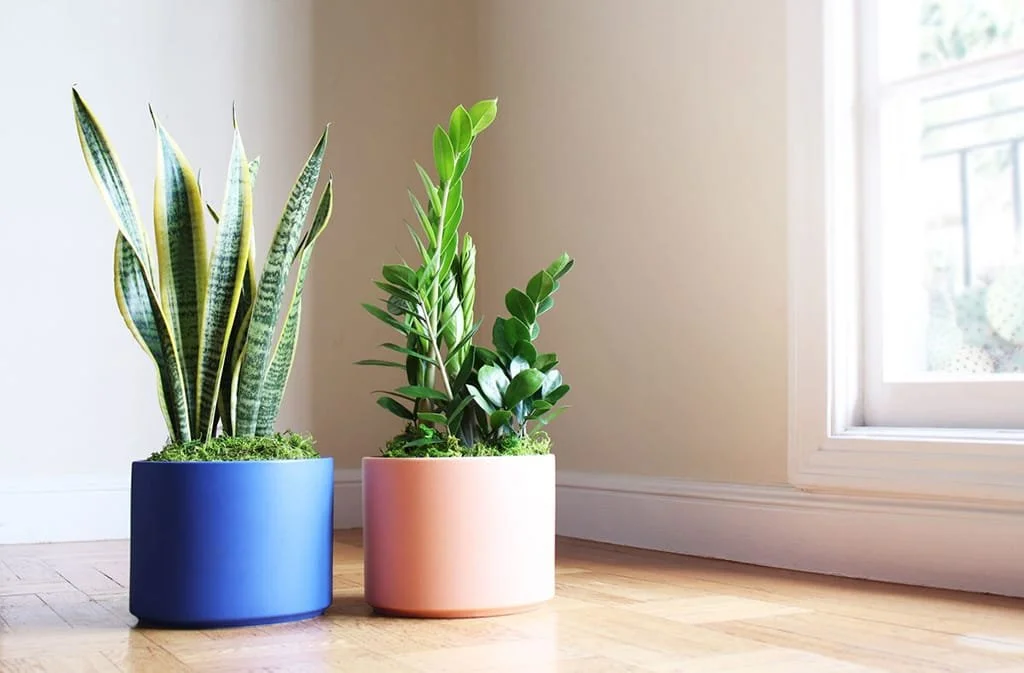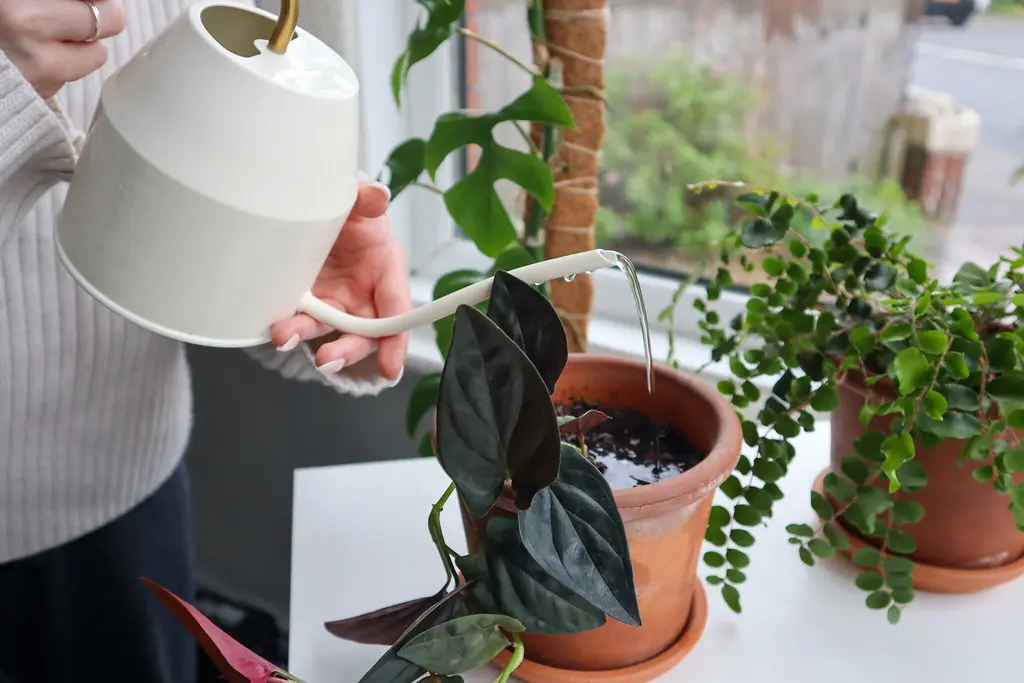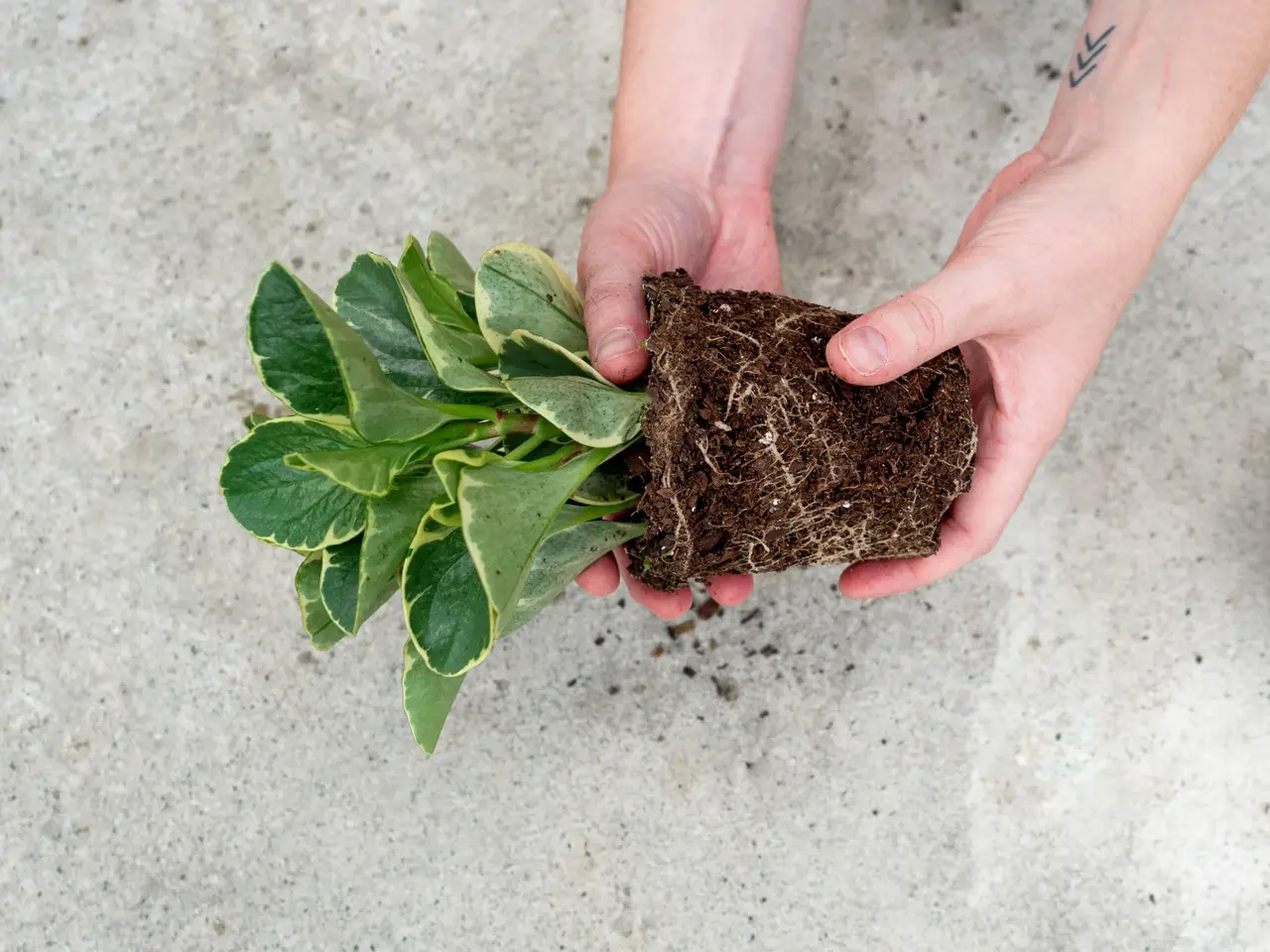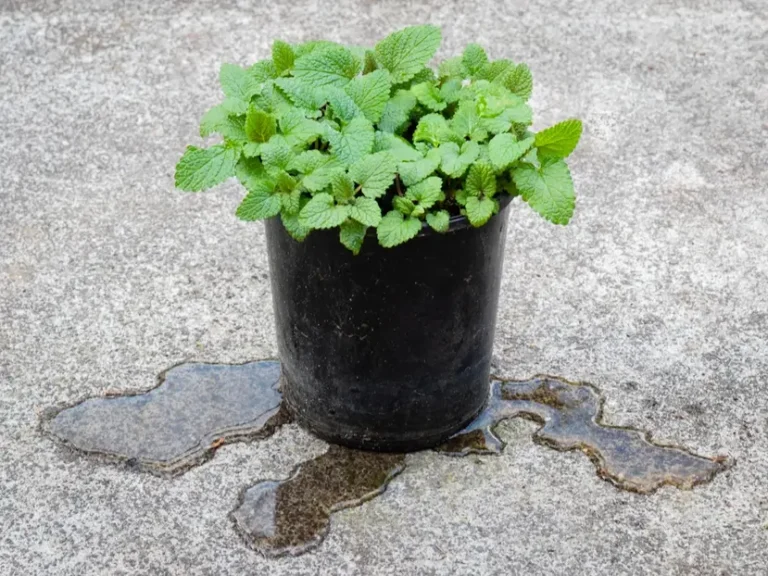Contents
Introduction
If you’ve ever had a plant that seemed to be thriving one day and then suddenly started drooping or wilting the next, you might have been dealing with a common issue: poor drainage in your plant container. Proper drainage is like the unsung hero of plant care. It’s not something you always think about, but it plays a crucial role in keeping your plants healthy and happy.
Why does drainage matter so much? Imagine your plant’s roots are like the roots of a tree. They need air, water, and space to grow properly. If the water doesn’t drain away efficiently, it can cause a few big problems. Too much water sitting in the container can suffocate the roots and lead to root rot, which is like a silent killer for plants. Root rot happens when the roots stay too wet for too long and start to decay, which can eventually kill your plant. Not exactly the kind of outcome you want after spending time and effort nurturing your green friends!
So, what exactly makes drainage work? At its core, it’s all about allowing excess water to escape from the bottom of your container and preventing water from pooling around the roots. This ensures that the soil remains moist but not waterlogged. And here’s the good news: ensuring proper drainage doesn’t have to be complicated. With a few simple steps, you can make sure your plants are sitting pretty with just the right amount of water.
In this guide, we’ll walk you through everything you need to know about getting drainage right in your plant containers. From choosing the best containers to adding the right materials for drainage, we’ll cover it all in a straightforward, no-fuss way. Whether you’re a seasoned gardener or a newbie just starting out, you’ll find easy tips and tricks to help your plants thrive. So let’s dig in and get your plants the drainage they need to grow strong and beautiful!
Understanding Plant Container Drainage
Alright, let’s dive into the nitty-gritty of plant container drainage. It might sound like a technical topic, but trust me, it’s pretty simple once you break it down. Essentially, effective drainage is all about making sure your plant’s roots have the best environment to grow in—one that’s not too wet and not too dry.

Components of Effective Drainage
Drainage Holes: Think of drainage holes as the tiny escape routes for excess water. These holes are usually found at the bottom of your plant containers, and their job is to let any extra water flow out. If your container doesn’t have these holes, water can get trapped at the bottom, leading to soggy soil and unhappy roots. When shopping for containers, always check if they have proper drainage holes or consider drilling some yourself if needed.
Drainage Layers: Adding a drainage layer is like giving your container a little extra help. You can place materials like gravel, small stones, or broken pieces of pottery at the bottom of your container. This layer helps water to move away from the soil and out through the drainage holes, preventing the soil from becoming waterlogged. It’s a simple trick that can make a big difference in keeping your plants healthy.
Types of Containers and Their Drainage Capabilities
Plastic Containers: These are super popular because they’re lightweight and usually cheaper. But, their drainage capabilities can vary. Some come with built-in holes, while others might not have enough drainage. Always check the container before you buy it to make sure it’s got good drainage.
Clay Pots: Clay pots are great because they’re porous, which means they naturally allow excess moisture to evaporate. This can be a big plus for plants that don’t like their roots sitting in too much water. However, they can dry out faster, so you might need to water your plants more often.
Ceramic and Glazed Pots: These pots look lovely and can be a stylish choice. But, their glaze can sometimes make them less effective at draining water. If you choose one of these, make sure it has drainage holes or be ready to monitor the soil moisture closely.
Fabric Pots: If you haven’t tried fabric pots, you might want to. They’re designed to provide excellent drainage and air circulation. The fabric allows excess water to escape easily, and it also helps prevent root rot by promoting healthy root growth.
So, whether you’re picking out a new container or working with what you already have, understanding these basics of drainage will help you keep your plants in tip-top shape. It’s all about making sure that excess water has a way to escape and that your plants have the right conditions to thrive.
Selecting the Right Container for Your Plants
Choosing the right container for your plants isn’t just about aesthetics; it’s crucial for ensuring your plants get the drainage they need. The right container can make all the difference in how well your plants grow and thrive. Let’s break down what to consider when picking out your plant containers.
Size and Material Considerations
Size: When it comes to plant containers, size really matters. A container that’s too small can cramp your plant’s roots and limit its growth. On the other hand, a container that’s too large can lead to overwatering issues because the extra soil will hold more moisture than the plant can use. Ideally, choose a container that’s just a bit larger than the current root ball of your plant. This allows room for growth without risking waterlogging.
Material: The material of your container affects how well it drains and how often you need to water your plants. Here’s a quick rundown:
- Plastic: These are lightweight and often come with drainage holes. However, they can sometimes retain too much heat and moisture, so check for proper drainage.
- Clay: Clay pots are great for drainage because they’re porous, allowing moisture to evaporate through the sides. They do tend to dry out faster, so you might need to water more frequently.
- Ceramic and Glazed: While these pots can be visually appealing, their glaze can hinder drainage. Make sure they have drainage holes and be cautious with watering.
- Fabric: Fabric pots are fantastic for drainage and air circulation. They allow excess water to escape easily and prevent root rot by promoting healthy root growth.
Container Features
Built-in Drainage Systems: Some containers come with built-in drainage features like trays or saucers with drainage channels. These are designed to manage excess water effectively. If you go for one of these, ensure that the drainage system actually works well and doesn’t just trap water at the bottom.
Self-Watering Containers: These containers are equipped with a reservoir that provides water to the plant as needed. They can be convenient and reduce the frequency of watering, but they also require careful monitoring to avoid overwatering. Make sure the self-watering system is properly designed to keep excess water from pooling.
When choosing your plant container, keep these factors in mind to ensure your plant gets the right environment. The right size and material can make watering easier and help keep your plants healthy. Whether you’re looking for something practical or stylish, there’s a container out there that’s perfect for your needs.
Enhancing Drainage in Plant Containers
Once you’ve picked the right container for your plants, it’s time to focus on enhancing the drainage to ensure your plants stay healthy and vibrant. Proper drainage isn’t just about having holes in the bottom of the container; it’s about creating an environment where excess water can escape and your plant roots can breathe. Here’s how you can improve drainage in your plant containers with a few simple techniques.

Adding a Drainage Layer
Materials to Use: Think of a drainage layer as a helper for your container. You can use materials like gravel, small stones, or even broken pottery pieces. These materials create a space at the bottom of the container where excess water can collect and move away from the soil. It’s like giving your container a little extra space to breathe. Just make sure the material you choose is clean and won’t decompose over time.
Layer Thickness: How much of this drainage material should you use? A general rule of thumb is to create a layer that’s about 1 to 2 inches thick at the bottom of the container. This thickness is usually enough to help with water flow without taking up too much space that your plant roots need.
Improving Soil Drainage
Soil Mixes: Not all soil is created equal when it comes to drainage. A good potting mix should be well-draining and able to retain some moisture without becoming soggy. Look for soil mixes that are specifically labeled for container gardening or that include components like peat moss, compost, and perlite. These ingredients help with aeration and water retention.
Adding Amendments: If your soil isn’t draining well, you can improve it by adding amendments. Materials like perlite, sand, or vermiculite can be mixed into the soil to increase its drainage capabilities. Perlite helps with aeration, sand improves water flow, and vermiculite retains moisture while still allowing excess water to escape. Just mix these into your potting soil according to the needs of your plant.
Container Modifications
Drilling Additional Holes: If your container doesn’t have enough drainage holes, you can easily fix that with a drill. Simply make a few extra holes in the bottom of the container to help water escape more efficiently. Be cautious when drilling to avoid cracking the container, especially if it’s made of delicate materials like ceramic.
Using Drainage Inserts: Drainage inserts are another handy tool. These are special devices or materials that you place inside the container to improve drainage. They’re often used to raise the plant up slightly from the bottom of the container, allowing excess water to flow out more easily. They can be particularly useful in containers that don’t have built-in drainage features.
By taking these steps, you can significantly improve the drainage in your plant containers, helping your plants thrive and preventing common issues like root rot and waterlogged soil. With a little effort, you’ll create the perfect environment for your plants to grow strong and healthy.
Common Drainage Problems and Solutions
Even with the best intentions, you might run into some drainage issues with your plant containers. Don’t worry, though—most problems are easy to fix with a little know-how. Here’s a guide to some common drainage problems you might encounter and how to solve them.
Overwatering Issues
Signs of Overwatering: One of the most common problems is overwatering. If you notice your plant’s leaves turning yellow, wilting, or becoming mushy, these could be signs that you’re giving your plant too much water. Overwatered soil often feels soggy and may have a sour smell. It’s a clear sign that water isn’t draining properly.
Preventive Measures: To prevent overwatering, make sure your container has good drainage and that you’re not watering too frequently. A good rule of thumb is to let the top inch or so of soil dry out before watering again. Also, consider using a moisture meter to help gauge when your plant actually needs water.
Root Rot
Identification: Root rot is a serious condition caused by roots sitting in waterlogged soil for too long. Symptoms include blackened, mushy roots and a general decline in plant health. You might also notice a foul smell coming from the soil. If you catch it early, there’s hope for recovery.
Treatment and Prevention: If you spot root rot, the first step is to remove the affected plant from its container. Trim away the rotted roots with sterilized scissors or pruners. Repot the plant in fresh, well-draining soil and a container with adequate drainage holes. To prevent root rot in the future, make sure you’re not overwatering and that your container has proper drainage.
Soil Compaction
Symptoms: Soil compaction happens when soil particles become packed down too tightly, restricting water flow and air to the roots. Symptoms include poor drainage, slow plant growth, and dry spots on the soil surface.

Solutions: To fix compacted soil, start by gently loosening the soil around the plant using a fork or stick. If the soil is too compacted, you might need to replace it with a fresh, well-aerating potting mix. Adding soil amendments like perlite or vermiculite can also help improve soil structure and drainage.
By recognizing and addressing these common drainage problems, you can keep your plants healthier and more vibrant. Remember, proper drainage is key to happy plants, so staying on top of these issues will help ensure your green friends stay in tip-top shape.
Seasonal and Environmental Considerations
Taking care of your plants involves more than just regular watering and ensuring proper drainage; it also means adjusting your care routine based on the seasons and environmental conditions. Different times of the year and various surroundings can affect how your plants manage water. Here’s how to adjust your drainage and care practices to keep your plants thriving year-round.
Seasonal Changes
Winter: In colder months, plant growth slows down, and plants generally need less water. During this time, be cautious about overwatering. The cool temperatures can cause the soil to stay moist for longer periods, increasing the risk of root rot. Make sure your containers have good drainage to prevent water from sitting too long. If you’re growing plants indoors, ensure they’re not sitting in drafts or near heaters, which can alter their moisture needs.
Summer: In the summer, plants often need more water due to higher temperatures and increased evaporation. However, even in warmer weather, it’s important to ensure proper drainage to avoid waterlogging. Check your containers regularly for excess water and adjust your watering schedule based on the temperature and humidity levels. Containers can heat up in the sun, so consider moving them to a spot with partial shade if you notice the soil drying out too quickly.
Environmental Factors
Indoor vs. Outdoor Containers: Indoor plants often face different challenges compared to outdoor plants. Indoor containers can retain more moisture because they’re not exposed to the elements. This makes proper drainage even more crucial. For outdoor containers, you need to consider rain and wind. Ensure your outdoor containers have good drainage to handle heavy rains and avoid waterlogging. Use saucers or trays to catch excess water if needed, and elevate containers slightly to improve air circulation and drainage.
Humidity Levels: Humidity affects how quickly soil dries out. In high-humidity environments, like tropical climates or indoors with high moisture levels, the soil may retain water longer. This can increase the risk of root rot if drainage isn’t adequate. Conversely, in dry climates, soil may dry out quickly, requiring more frequent watering. Adjust your watering practices based on your local humidity levels and ensure your containers have good drainage to accommodate these variations.
By taking these seasonal and environmental factors into account, you can tailor your plant care routine to meet your plants’ needs. This ensures that they receive the right amount of water and maintain healthy growth throughout the year.
Conclusion
Keeping your plants happy and healthy involves more than just the basics of watering and feeding; it’s all about ensuring they have the right environment, especially when it comes to drainage. Proper drainage is crucial for preventing problems like root rot, overwatering, and soil compaction. By understanding how to manage and improve drainage in your plant containers, you set the stage for vibrant, thriving plants.
To recap, making sure your containers have good drainage starts with choosing the right type and size of container for your plants. From there, adding a drainage layer at the bottom, using well-draining soil, and considering modifications like additional holes or drainage inserts can make a big difference. Addressing common drainage issues such as overwatering and root rot promptly will help keep your plants in top shape.
Remember to adjust your care routine based on seasonal changes and environmental factors. Whether it’s the cooler temperatures of winter or the heat of summer, adapting your approach will ensure that your plants receive just the right amount of water and maintain healthy growth throughout the year.
By following these tips and keeping an eye on your plants’ needs, you’ll be well on your way to creating a thriving garden, whether indoors or out. With a little effort and attention to detail, you can help your plants flourish and enjoy the beauty they bring to your space. Happy gardening!



